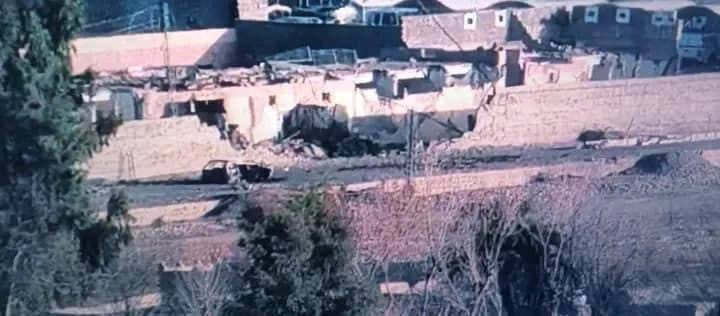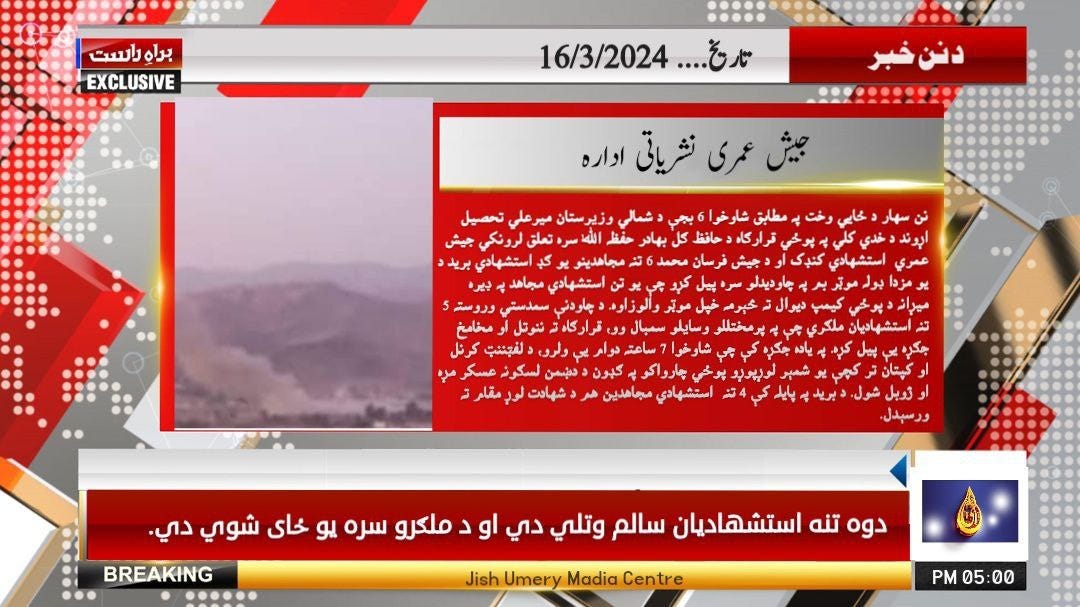Hafiz Gul Bahadur's Latest Attack Marks a New Phase in the Group's Trajectory
A new attack by two HGB subfactions signals an advancement in the group's tactics
On March 16, 2024, a group of Pakistani Taliban attacked a military camp in Khadi area of Mir Ali, North Waziristan tribal district, in early morning. The militants first rammed a vehicle laden with explosives into a military camp. Subsequently, clashes erupted between militants and security forces around the camp, which lasted for around six hours. As a result, at least seven members of Pakistan’s security forces lost their lives, while more than a dozen have been injured.
Significantly, soon after the start of the attack, the spokesmen of two major subfactions of Hafiz Gul Bahadur group (HGB) claimed responsibility for the assault, arguing that a joint operation between Jaish-e-Fursan-e-Muhammad (JFM) and Jaish-e-Omari (JeO) was undergoing in the area. The spokesmen of the two factions, Nasratullah Waziristani and Zarar Dawar, respectively, constantly gave live update on the attack, sharing also videos of the initial explosion and subsequent clashes, hinting that more militants were surrounding the area of the attack to record and take pictures.
Some HGB members shared the names of some attackers online; hence, it was revealed that the militant who rammed the vehicle laden with explosives into the military installation in order to pave the way for other HGB militants was named Zarqawi, from the Al-Hamza Battalion of the JFM suicide squad. Initial message circulated by HGB members, instead, claimed that he was named Jafar. This is because the real name of the individual was Jafar and his nom de guerre Zarqawi, as HGB spokesman confirmed. Meanwhile, another militant, Junaid, was killed in early clashes with security forces. Both Fursan al-Aalaam – the media mouthpiece of JFM – and several members of the group issued statements in Pashto and Urdu detailing the attack.
Eventually, Pakistan’s security forces effectively repelled the attackers. A joint statement from the two HGB factions revealed that in total, 6 attackers took part in the operation; four died in the first suicide attack and in the subsequent clashes, while two managed to escape the scene and rejoin their groups.
In a private conversation, HGB spokesman added that all six militants had been trained in North Waziristan in camps which are operational under HGB umbrella. Three militants including Jafar had been trained in North Waziristan, where HGB had recently opened a training center under the leadership of Khalid Waziristani, the amir of JFM. While the three other militants had been trained in a camp operated by JeO, whose amir is Ali Dawar.
It is significant to highlight that this marks the first openly claimed collaboration between two different HGB factions. While in the past, JFM and JeO had carried out attacks, in a change, HGB is increasingly relying on social media to signal its operations and the activities of its militants, in a similar way as the Tehreek-e-Taliban Pakistan (TTP). As a matter of fact, several TTP affiliated media channels also reported the attack, sharing the updates given by JFM spokesman, Nasratullah Waziristani, through Fursan al-Aalaam. Such a high profile attack by HGB militants is not frequent, as the group usually stages suicide attacks without the follow-up of other militants who assault the security forces. Such tactics have been extensively employed by a TTP affiliate, Tehreek-e-Jihad Pakistan (TJP), which, however, has gone silent for the last four months.
More details from the HGB are expected to be released soon, as HGB spokesman hinted that the group was soon going to release obituaries of the deceased militants as well as a video documenting the attack.









Great read ! So ironic that these terrorists were armed and trained under the Pak security apparatus in the 80's. Absolute clowns running the show
The militancy world is unbelievably complex, struggling to understand if HGB is independent or colluding with TTP- especially after this attack.